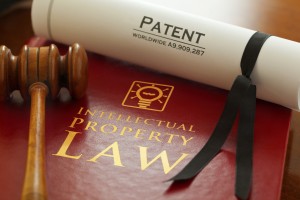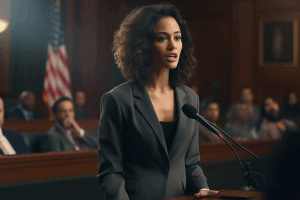 In this age of multiple patent cases, as well as aggressive defense tactics that put a premium on bringing as much firepower to bear as a patent plaintiff as possible, questions of claim preclusion or res judicata continue to challenge patent litigants. For plaintiffs that own deep portfolios, or are dealing with a defendant that is releasing infringing products over time, the decision on when to launch a patent assertion effort is often informed by an analysis of whether final judgment in a given case will resolve all the infringement concerns raised by that defendant. There are times, however, where a case is filed to address current infringing conduct, but a need arises later on to file a second — or sometimes even third or fourth case — to capture the full scope of the infringing defendant’s activity over time. In such a scenario, there can be real concerns about whether the later assertion will raise claim preclusion or res judicata issues when the earlier case has been resolved on the merits.
In this age of multiple patent cases, as well as aggressive defense tactics that put a premium on bringing as much firepower to bear as a patent plaintiff as possible, questions of claim preclusion or res judicata continue to challenge patent litigants. For plaintiffs that own deep portfolios, or are dealing with a defendant that is releasing infringing products over time, the decision on when to launch a patent assertion effort is often informed by an analysis of whether final judgment in a given case will resolve all the infringement concerns raised by that defendant. There are times, however, where a case is filed to address current infringing conduct, but a need arises later on to file a second — or sometimes even third or fourth case — to capture the full scope of the infringing defendant’s activity over time. In such a scenario, there can be real concerns about whether the later assertion will raise claim preclusion or res judicata issues when the earlier case has been resolved on the merits.
On the defendant side, confrontation by a serial plaintiff will often focus attention on potential claim preclusion or res judicata defenses, where there is an earlier case that went to final judgment. This defense can be a powerful tool toward stopping follow-on litigation filed by a patentee, including where the patentee failed to assert patents in the earlier case that could have been asserted at that point, or where the patentee is asserting claims from previously adjudicated patents to ostensibly capture new infringing conduct. Sorting through the different permutations can be a challenging exercise for everyone, including jurists and counsel on both sides of a case. Thankfully, a precedential federal circuit decision issued last week helps define the scope of when these defenses can apply. In the process, the decision also sheds some light on the differences between assertions of direct and induced infringement.
Before getting into the decision itself, let me get the yucks out of the way. I can start with the subject matter of the dispute, the lucrative market for what the federal circuit both alliteratively and memorably termed “sexed semen straws.” Basically, when it comes to semen straws, you can take your chances on whether you end up with a male or female calf using regular straws, or you can try to move the odds in your favor to end up with calves of a particular sex by using a sexed straw. (Think of an ice-cold Slurpee on a hot day. You can take your chances on thirst quenching and increasing your blood sugar levels to unmatched heights using a regular straw, or you can try to guarantee a better result using a Slurpee straw.) If you are interested, there is a great analysis on YouTube to help you decide if sexed semen straws are right for you and your herd of cattle. Here again, the chance to learn more than you ever wanted to know about bovine artificial insemination options serves up a potent reminder of why patent law is the best kind of law there is.

Skills That Set Firms Apart
Legal expertise alone isn’t enough. Today’s most successful firms invest in developing the skills that drive collaboration, leadership, and business growth. Our on-demand, customizable training modules deliver practical, high-impact learning for attorneys and staff—when and where they need it.
For the Federal Circuit, the issues presented by the case were both challenging and indicative of how hard-fought competitor suits can lead to many years of legal wrangling. (As usual, Prof. Dennis Crouch has a great analysis of the federal circuit decision on his Patently-O blog.) In fact, the first filed case in the dispute was brought in 2014, which resulted in a patentee win, including a stipulation of direct infringement. At issue in this appeal was a 2020 filing, which the federal circuit referred to as ABS III. In that case, the patentee asserted inducement claims on the same patent it had prevailed on in 2014, while also trying to add two new patents to the case that were recently issued. In response, the defendant ABS filed a motion to dismiss the induced infringement allegations, as well as a motion to stay pending IPR of one of the newly issued patents. The district court granted those motions, while also denying the patentee’s motions to supplement its complaint to add the two patents.
To start, the Federal Circuit addressed the “the issue of res judicata or claim preclusion.” For the patentee, the finding of claim preclusion against its induced infringement claims in ABS III based on its successful assertion of direct infringement in ABS I was error. In particular, the patentee “argues that it would have been premature to bring an induced infringement action against ABS during ABS I because, at that time, ABS had not yet begun selling or licensing its GSS technology to third parties.” In response, ABS argued that at the time of ABS I, it had not sold anything infringing anyway, so the patentee’s “relief sought was already prospective in nature.”
Still, the Federal Circuit found in the patentee’s favor here, finding that the patentee “would need additional facts to plausibly allege an induced infringement claim — facts that largely came to light during discovery in ABS II” — or after ABS I had been fully litigated. And because proving induced infringement involves making more proof than for direct infringement, “[a]n induced patent infringement claim brought at the time of trial in ABS I would have been based on speculation, in part because the parties stipulated to direct infringement and the question of inducement was not before the jury.” In sum, the federal circuit concluded that the patentee “was not precluded from bringing an induced patent infringement claim in ABS III based on the judgment in ABS I.”
Ultimately, this precedential decision could be one that has significant impact going forward. Even with the legal contours provided by this case and others that it cites, the question of whether a later patent case involves the same “transactional facts” will continue to present as an involved one for litigants and jurists to work through. Put another way, it will be interesting to see if this decision seeds the outcomes of future patent cases involving multiple patentee attacks on the same defendant, either with different patents or based on different alleged infringing activity. At a minimum, this decision reminds us that infringement is a question that must be answered based on the activity of the alleged infringer as of the time of a given case, rather than just based on what the infringer was doing at the time it was first sued by the patent owner. Infringement is infringement is infringement, unless it is different each time.
Please feel free to send comments or questions to me at [email protected] or via Twitter: @gkroub. Any topic suggestions or thoughts are most welcome.
Gaston Kroub lives in Brooklyn and is a founding partner of Kroub, Silbersher & Kolmykov PLLC, an intellectual property litigation boutique, and Markman Advisors LLC, a leading consultancy on patent issues for the investment community. Gaston’s practice focuses on intellectual property litigation and related counseling, with a strong focus on patent matters. You can reach him at [email protected] or follow him on Twitter: @gkroub.
